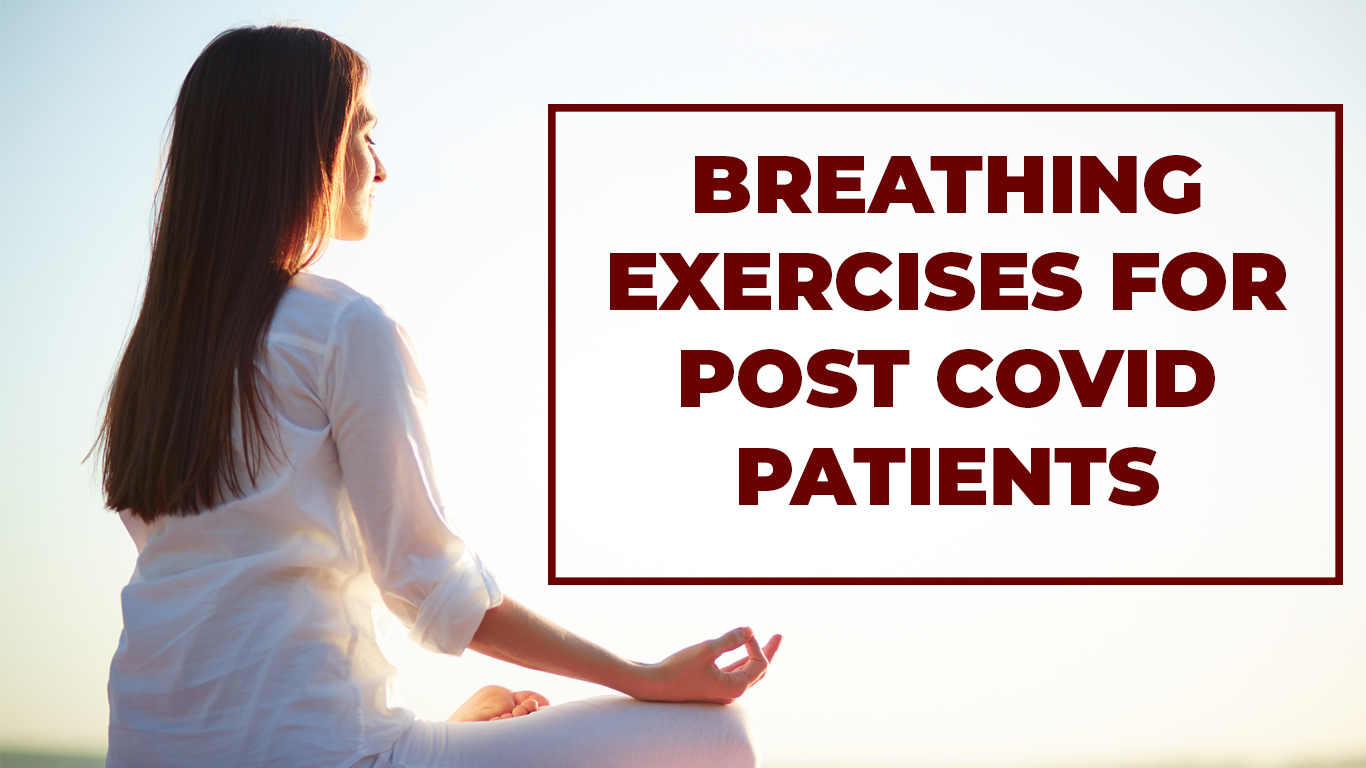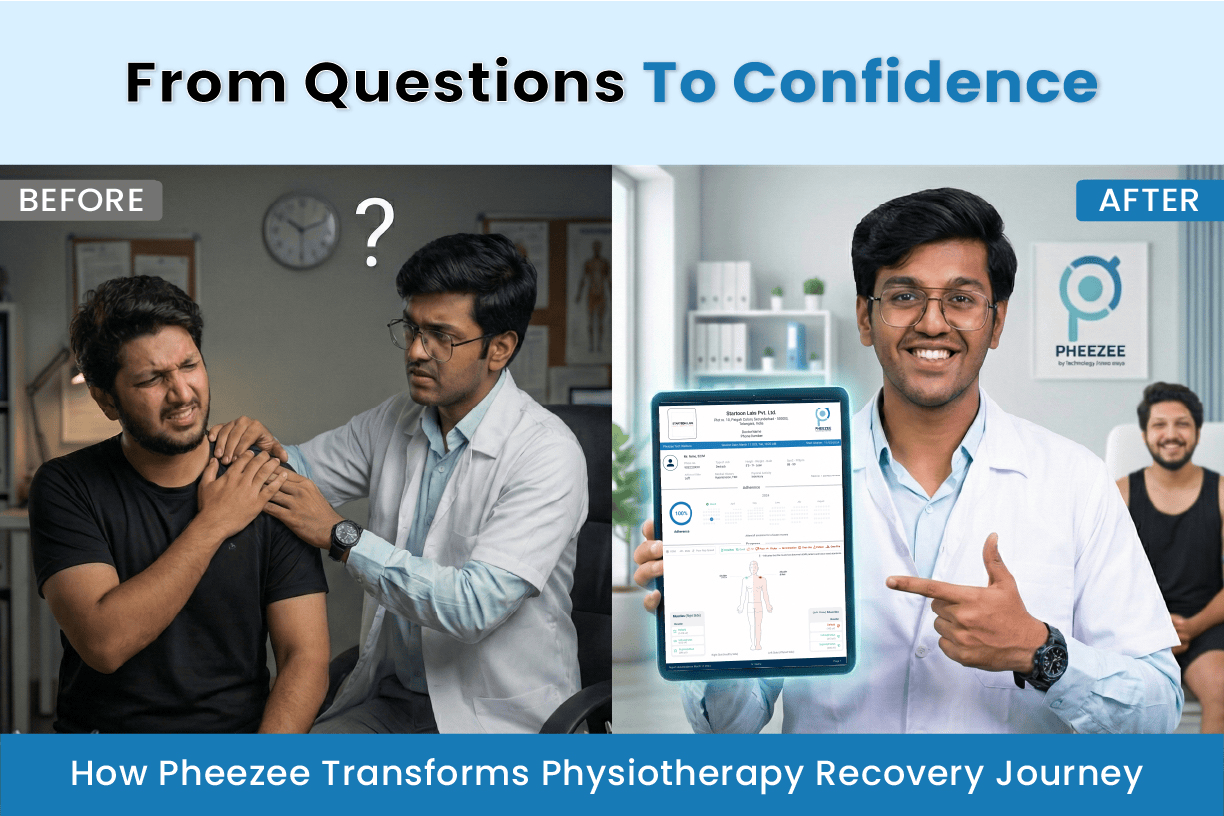Breathing exercises for Post Covid Patients

Countries all across the world are in various stages of the pandemic with many countries now entering the “day after” COVID-19 phase.
Many people who have suffered from the effects of this disease might now be at risk of long-term impairment and disability.
The extent of this impairment and disability is yet unknown, but it is clear from early research that these patients will be in need of rehabilitation in all phases of the disease — acute, post-acute and long-term.
Rehabilitation is defined as “a set of interventions designed to reduce disability and optimize functioning in individuals with health conditions in interaction with their environment.”
Rehabilitation might very well be a key strategy to reduce the impact of COVID-19 on the health and function of people.
Physiotherapists are essential to these rehabilitation efforts in all phases to facilitate early discharge, but even more to support and empower patients.
Benefits of Rehabilitation in COVID-19 Patients
Rehabilitation has a positive effect on health outcomes of patients with severe COVID-19. It achieves this through:
Optimizing health and functioning outcomes
● Rehabilitation can reduce Intensive Care Unit -admission related complications, such as Post Intensive Care Syndrome (PICS), Intensive care unit acquired weakness (ICUAW)
● Rehabilitation interventions address several consequences of severe COVID-19 such as:
- Physical impairments
- Cognitive impairments
- Swallow impairments
- Provision of psychosocial support
● It is evident that older people and people with pre-existing comorbidities are at higher risk for more severe illness. Rehabilitation can be beneficial in these populations to maintain their prior levels of functionality and independence.
Early Discharge Facilitation
During the pandemic, there is a high demand for hospital beds in countries worldwide, especially during the times when the pandemic reaches its peak in a country or area. This leads to patients being discharged sooner than would normally be the case. Rehabilitation is crucial in this scenario to prepare a patient for discharge, coordinating complex discharges and also to safeguard the continuity of care.
Reducing the risk of readmission
Rehabilitation is a key strategy to ensure that patients do not deteriorate after discharge and require readmission. During the COVID-19 pandemic, this is critical in the context of shortages of hospital beds.
Physiotherapists as rehabilitation professionals are frontline healthcare professionals and should be engaged in the care of patients suffering from severe cases of COVID-19.
Physiotherapy and the Post-Acute COVID-19 Rehabilitation Phase
● Physiotherapists are instrumental in the rehabilitation of patients as they transition from the acute phase to the post-acute phase.
● The consequences of COVID-19 will be specific in each individual and their rehabilitation needs will be specific to these consequences such as:
- Long term ventilation
- Immobilisation
- Deconditioning
- Related impairments — respiratory, neurological, musculoskeletal
● COVID-19 patients will often present with pre-existing comorbidities and this must be taken into consideration in the rehabilitation plan for the patient. Physiotherapists working across various disciplines should work together and draw on the expertise of each other.
COVID-19 Respiratory Recovery Exercises
After an illness like COVID-19, it may take your body some time to feel normal again. Coronaviruses, like the one that causes COVID-19, target the respiratory system and can largely affect your lungs, heart, and muscles. The goal is to build up the ability to breathe deeply during any activity, which can be accomplished by a few specific exercises.
Deep breathing can help restore diaphragm function and increase lung capacity. Anyone can benefit from deep breathing techniques, but they play an especially important role in the COVID-19 recovery process. The exercises can be started at home during self-isolation and easily incorporated into your daily routine.
There are several exercises one can do to strengthen these muscles and improve their overall breathing capacity.
Prone Breathing
Begin by lying on your stomach with one or two pillows under your hips and a pillow or folded towel under your head. Maintain this position while breathing evenly. Perform for 30 minutes (up to 2 hours) at a time.
Chest Wall Stretching
Begin in a standing, upright position in the center of a doorway. With elbows bent, place your forearms on the sides of the doorway at a 90-degree angle from your sides. Take a small step forward until you feel a stretch in the front of your shoulders. Repeat this stretch with your arms at a 120 degree angle. Perform for 30–60 seconds, multiple times daily.
Breathing exercises
If you experienced shortness of breath during your illness, these final exercises can be added on when your shortness of breath starts to improve.
Diaphragmatic breathing in 90/90 position:
Deep breathing restores lung function by using the diaphragm. Breathing through the nose strengthens the diaphragm and encourages the nervous system to relax and restore itself.
Begin by lying on the floor with your feet on a chair. Place one hand on your belly and the other on your chest wall. Slowly take a deep breath in, filling your belly with air, then exhale and repeat. Make sure not to arch your lower back while inhaling. Perform for 5–10 minutes.
Quadruped breathing:
Begin on all fours with your back straight. Round your back up towards the ceiling as you exhale fully. Pause at the top for 3 seconds and then inhale on your return. Perform for 10 repetitions with each repetition lasting ~10 seconds.
Ideal postures for improved oxygen uptake
Sitting:
Sit with your feet resting flat on the ground. Your ears should fall in line with your shoulders and hips. Try to avoid slouching your shoulders forward.
Standing:
Your weight should be equally on both feet when standing. Your ears should fall in line with shoulders, hips, and heels. Try to avoid slouching your shoulders forward and a forward chin position.
COVID-19 mainly damages the respiratory system, importing great significance to respiratory rehabilitation and physical therapy interventions. The main goal of respiratory physiotherapy is to reduce the symptoms of dyspnea, improve lung capacity, counteract the complications resulting from respiratory failure and immobilization, decrease the level of anxiety and counteract depression.
For patients, rehabilitation at all stages is necessary. It can effectively improve the respiratory function of patients, their exercise endurance and physical strength, inhibit the occurrence of various complications or disuse syndromes.
Preventing patients from various physical and psychological disorders, can facilitate patients’ return to family, work, and society as soon as possible, and improve their quality of life.
Physical therapy of COVID-19 patients will not only reduce the mortality rate of patients, hospital admission time and medical expenses, but also save medical resources, reduce personal and national economic losses, and the probability of adverse social stability events such as medical collapse.



Be the first to comment on this post